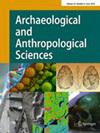Living on sand. A functional and PDSM analysis of obsidian and other volcanic rock tools from two coastal settlements: Playa Chica and Dunas de Maspalomas (Gran Canaria, Spain)
Abstract
The state of the surfaces of prehistoric stone tools must be assessed before initiating traceological research as they may have suffered from post-depositional surface modifications (PDSM) stemming from sediment and aeolian abrasion and trampling that could have eliminated their original use-wear traces. PDSM research not only serves to avoid misinterpreting the use-wear but can shed light on formation processes of archaeological sites. Recognising these modifications helps determine the choice of which stones to study, especially in the case of industrial volcanic rock assemblages where use-wear analyses require a deep understanding of their physical characteristics. Observations of tools from two coastal indigenous settlements on the Island of Gran Canaria, notably Playa Chica (sixth-thirteenth centuries AD) and Dunas de Maspalomas (eighth-eleventh centuries AD), reveal the problems of identifying the use-wear in the framework of activities carried out in open, sandy environments. Moreover, the composition and granulometry of the sands of each site differ. The objective of this study is thus to identify the effects of the mechanical alterations provoked by these sands on the macro and micro use-wear of the different archaeological tools hewn from obsidian and other volcanic rocks. This was carried out by means of a programme of experimentation involving knapping a series of tools of both obsidian and other volcanic rocks, working them with different types of contact materials (animal and plant) to observe their use-wear, and ultimately simulate the PDSM they suffered in a vibration device using sand samples collected at each of the two sites. The findings shed new light on the post-depositional taphonomic alterations affecting the surfaces and use-wear of archaeological volcanic rocks tools.

 求助内容:
求助内容: 应助结果提醒方式:
应助结果提醒方式:


